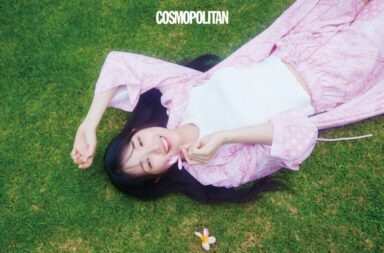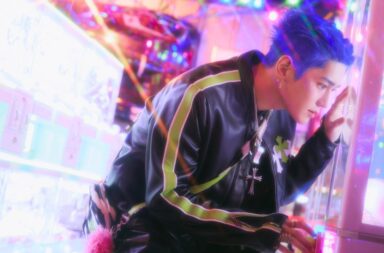A few days ago, I discussed the introduction of the very first K-pop idol groups — H.O.T and Keep Six. 1996 was a year of change, of transition, but the Korean music scene still didn’t look that vastly different from that of the 1970s or 80s. Sure, there were some groups with a strange new sound, but the faces and songs were still recognizable to an older audience. 10 years later, 2006 heralded in a completely different scene.
A lot had happened in those ten years; more companies had risen up around SM and YG Entertainment to capitalize on the new genre. JYP Entertainment had cemented their place in the industry with the success of Rain. DSP Entertainment rounded out the group by housing the popular 90s groups Sechs Kies and Fin.K.L, and the newly debuted SS501.
The biggest surprise of 2006 was the humongous rise of Eru, who wasn’t signed with any famous company, who had simply entered the music industry in 2005 while on leave from Berklee School of Music. His song of 2006, “Black Glasses” feat. Daylight, off his second album, made waves among young Koreans and peaked on on- and off-line charts. The song, whose music video starred the young idol actor Kim Hyun-joong from SS501, also won the SBS Bonsang of the year. It also became increasingly famous in Indonesia in 2012 after being used in the OST for the film Hello, Goodbye.
Meanwhile, there was dramatic upheaval in the world of idols. Most of the big groups of the first generation of K-pop, as we know them now, debuted between 1997 and 1999, and many of them gave way to newer versions in the first few years of the new millennium (H.O.T — 1996-2001; Sechs Kies — 1997-2000; NRG — 1997-2006; Baby VOX –– 1997-2006; S.E.S — 1997-2002; g.o.d — 1999-2006). Trivia: Many of you may know that Shinhwa is the longest continuously running K-pop boy group, but you may not have realized how long. These legendary groups of the first generation were Shinhwa’s contemporaries when they debuted in March of 1998, which means they will be celebrating their 19th anniversary in just a few months. Their 2006 hit was the song “Once in a Lifetime”, which was challenged by rookie group KNK this year.
There was an interesting transfer of power when the last four of these great idol groups of the first generation disbanded this year, including NRG — after a somewhat successful 2005, Baby VOX — they had not promoted since 2004, Fin.K.L — separating to focus on solo activities, and g.o.d — who held their 100th concert before disbanding. Their popularity vacuum was taken up by the newly debuted rookie groups Wonder Girls with “Irony”, Brown Eyed Girls with “Hold the Line”, and Big Bang with “We Belong Together”.
Trivia: Before they found their places in the Brown Eyed Girls and Big Bang, respectively, Gain and Seungri both participated in the 2005 audition show Battle Shinhwa! which Shinhwa hosted in an only slightly successful attempt to create their own new idol group. The group formed, Battle, did have a popular debut song, “Crash”, this year, but they have since mostly faded into obscurity.
https://www.youtube.com/watch?v=85w7TxLLCdQ
The other idol groups on the scene in 2006 were the still new Super Junior-05, SS501, and CSJH The Grace, and of course the 2-year-old but already immensely popular TVXQ. The quintet, as they still were at the time, had just wrapped up their debut promotions in Japan and in February of 2006 embarked on their first international tour — making headlines for scheduling shows in Bangkok and Kuala Lumpur. 2006 was a very busy year for the group as they also released their fourth, fifth, sixth, seventh, and eighth Japanese singles and, in September, the best-selling South Korean album of 2006 in the form of “O”-Jung.Ban.Hap. At the end of the year award shows, they won 3 Daesangs, 4 Bonsangs, and many others, including Artist of the Year at the Mnet Km Music Festival (now known as MAMA), or MKMF for short.
There were two singles on the album, the moody and intense title song “O-Jung.Ban.Hap”, and the vastly different upbeat “Balloons”. “Balloons” was in fact a remake of a song by an old Korean band called Five Fingers.
Super Junior-05 was still meant to be a rotational group at the beginning of 2006, but after SM Entertainment settled on adding Kyuhyun to the lineup that year, the rotational concept was scrapped. Their single of 2006, “U”, showcased all final thirteen members and also succeeded in crashing the download server of SM’s early website. Take a quick watch of this perfect cover of “U” by Seventeen. Super Junior’s first subgroup also debuted in 2006, the ballad trio Super Junior K.R.Y (standing for members Kyuhyun, Ryeowook, and Yesung) with “The One I Love”. The song was used in the OST for the drama Hyena that year.
CSJH had a similar goal in 2006 as their brother group, TVXQ. They branched out in Japan and China with different language versions of the single “Boomerang” and released the single “My Everything” in Korea at the end of the year. Meanwhile, SS501 wasn’t very active in 2006, only releasing one album, containing the overly-dramatic “Unlock” and very poppy “Four Chance” — while these were successful hits, it wouldn’t be until 2007 and 2008 that the group would really take off.
Rain hit the biggest milestone of 2006 with his Rain’s Coming World Tour and inclusion in Time Magazine’s “100 Most Influential People Who Shape Our World”. This sudden global stardom spawned the great feud-meeting between Rain and Stephen Colbert of 2007-2008, during which Colbert created a parody of Rain’s “Ways to Avoid the Sun” music video and Rain challenged Stephen to a Dance Dance Revolution-off.
The other heart-throb soloist of the 2000s, Se7en, followed up Rain’s American debut with one of his own in 2008, following a 2006 YG family tour which hit Washington DC, NYC, and Los Angeles. On Korean shores, his hit song of 2006 was “I Will Do Well”.
Amidst all this sudden change, branching out, and stepping out of the box, the Korean music scene was kept stable with numerous hits by already well-established groups. The biggest one was SG Wannabe’s release of “Partner for Life” that year, and their company, Core Contents Media even hit a grand slam with the debut of their sister-group, SeeYa (not to be confused with the later, entirely different group under the same company, The SeeYa which debuted in 2012). SeeYa went big with “Scent of a Woman”.
2006’s SG Wannabe release catapulted off their success of “Saldaga” the previous year and took their album to #1 on many charts. They also repeated their trend of 2-part MVs — “Partner for Life” was followed up by “Slowpoke”.
Buzz stayed strong with the hit “You Don’t Know Men”. Fly to the Sky had a 2006 hit in the form of “Like A Man”, and the young BoA kept her streak going with “Key of Heart”. The popular R&B group of 2003, Vibe, also came back with “That Man, That Woman” (sung again by Huh Gak and A-Pink’s Jung Eun-ji in 2014, by Davichi and Wheesung in 2012, and by Sungjae of BtoB on King of Masked Singer in 2015). The soloists of 2005 were still hugely popular in 2006 — they were very much the trend of the day, like hip-hop in the early 2010s.
Baek Ji-young took off with her fifth album, and the single “I Won’t Love” (also beautifully covered by Lee Seung-gi in 2012). Kim Jong-kook released his last album, and the single “Letter”, before his military enlistment. A very young Lee Seung-gi released “Words Hard to Tell” while Nell crooned “I’ve Lost My Heart”, Lee Soo-young bopped to “Grace”, EZ Life said “Not You, Your Older Sister”, and Sung Shi-kyung gave us the more traditional “On the Street”, a remake of an old song from the 70s or 80s.
Overall, we saw much more variety of music in 2006 than we ever had before. The emotional ballads still held strong while the hard-hitting techno beats and raps were starting to flesh themselves out. There are bits and pieces of sound that one realizes might influence the next generation or two. But no one could have possibly guessed how much the genre could grow and blossom in the next 10 years.
Coming up next: The top hits of 2016.
Read our other posts in this series:
History of K-pop: 1992-1995, The Beginning
History of K-pop, 1996: The Creation of Idols
History of K-pop: 2005, the year of the soloists, the rise of Epik High, and the debuts of SS501 and Super Junior
History of K-pop: 2015, Old Faces Return, and New Faces Make History
History of K-pop: Top Hits of 2016
(YouTube: (1)(2)(3)(4)(5)(6)(7)(8)(9)(10)(11)(12)(13)(14)(15)(16)(17)(18)(19)(20)(21)(22)(23)(24)(25), Images via KBS, MBC, SM Entertainment, JYP Entertainment)


